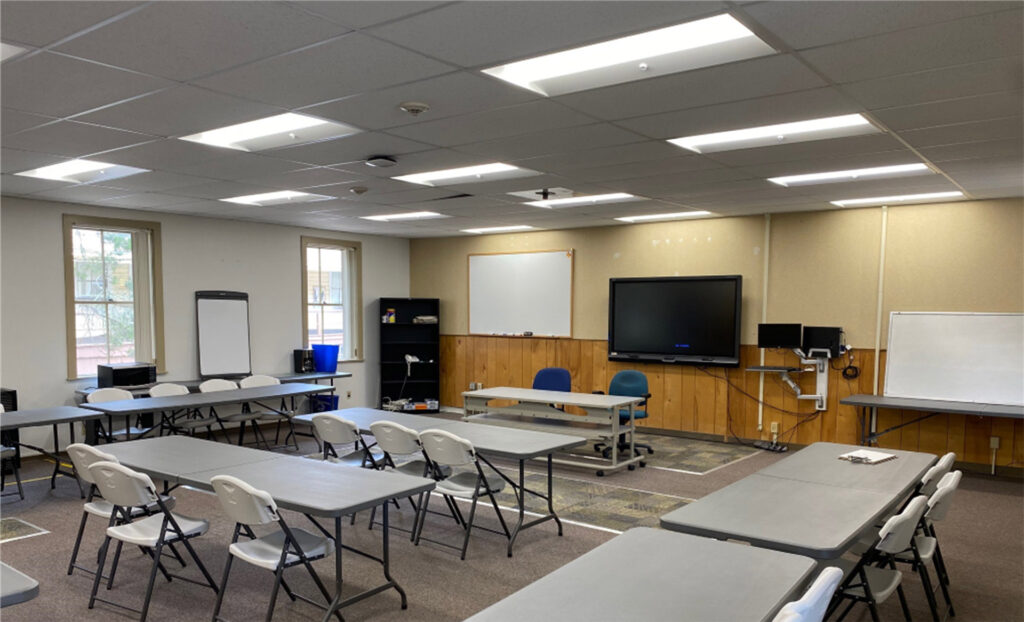
The Situation
A historic West Coast military training facility built in 1902 was faced with outdated and insufficient lighting in both their training and office spaces.
The Solution
Phase I of the project consisted of upgrading over 1,200 volumetric troffers and 136 wrap fixtures with FSC Lighting’s L74-RFKW retrofit kits and L5600 LED Wraps. All fixtures were outfitted with IR TEC’s zonal ZigBee wireless OS NET, which allows the site to have both dimming and daylight harvesting capabilities. OS-NET from IR-TEC is a second-to-none wireless occupancy sensor network solution developed to enable smart lighting control with unsurpassed level of flexibility, functionality and simplicity. ZigBee based wireless mesh network can be deployed to execute different sensing control schemes, including occupancy or vacancy sensing with daylight harvesting, bi-level StepDIM or continuous SmartDIM control. With easy and intuitive settings via a handheld remote programmer, the OS-NET Sensors can be programmed in an individual or a group basis and can be easily re-configured to provide different control zones or re-assign new zones.
In addition, 1,100 fluorescent fixtures were outfitted with a special bracket. The custom bracket accommodated FSC’s Extrusion Bar and allowed the customer to keep their existing architectural volumetric fixtures, saving time and money. Lastly, a specific beauty ring was fabricated to house the new OS NET sensor. FSC Lighting has the ability to make specific modifications to solve installation issues. PreFab by FSC is a program available to our distributor and contractor customers; we’ll modify fixtures to meet the needs of installation. Because the modifications are made at our facility and not in the field, we can complete them at a fraction of the cost.
Since all products on this project were assembled at our factory in Rancho Cucamonga, CA they are all Buy American Act compliant. FSC products come with a five-year warranty, giving its customers long-term peace of mind on their investment.
Download the Case Study